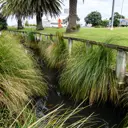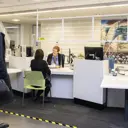Where oh where do my Council rates go?
17 Apr 2024, 8:34 AM
If someone asked you what your rates pay for, you’d probably be able to name a few things, like maintaining roads and footpaths, fixing leaky pipes, mowing reserves, and looking after pools, sportsgrounds, parks, and playgrounds.
But there’s a lot more to it than that – rates have a direct impact on how our residents live, learn, work, play, do business, and socialise in our district. By paying your rates, you’re helping to make Kapiti the fantastic place it is and ensuring it’s resilient for the future.
)
If you’d asked for a receipt detailing what your rates paid for over a typical year, it might look something like this:
- delivered 6,000,000 litres of treated drinking water to households
- cleaned 8 kilometres of open drains
- sealed 6 kilometres of local roads
- maintained more than 120 coastal accessways and 4 kilometres of seawalls
- looked after more than 200 kilometres of stormwater pipes
- maintained and provided 100 kilometres of walking trails, cycleways, and bridleways
- maintained 49 playgrounds and 16 sportsgrounds, ensuring year-round access
- registered 8000 dogs
- had 284,000 visits to our libraries
- hosted 3,000 or so people at Movies in the Park
- planted more than 22,000 native plants, shrubs and trees
- spent more than 6,000 hours weedeating and almost 9,000 mowing
- greeted 312,000 visitors at our aquatics facilities
- welcomed more than 28,000 customers at our front counters around the district
- answered around 42,000 customer phone calls
- kept you informed with regular e-newsletters, media articles, web content, and many consultations and community engagement sessions.
That’s… a lot. And it’s expensive – our capital works programme alone has a proposed budget of more than $600 million over the next 10 years.
We don’t have income-generating assets like some councils, so 70 percent of our income comes from your rates.
)
)
)
The rest comes from grants and subsidies, fees and charges, development and financial contributions, and other operating revenue. This means we need to balance the cost of providing services that benefit everyone in our community with affordability to our ratepayers.
That’s why a lot of work goes into our planning and budgeting. Our Long-term Plan 2024–34 came into effect on 1 July 2024 and outlines what we'll deliver, the levels of services we're aiming for, and how much everything will cost.
 maintain 200 kilometres of stormwater pipes
maintain 200 kilometres of stormwater pipes
 spend over 9,000 hours mowing and 6,000 hours weedeating
spend over 9,000 hours mowing and 6,000 hours weedeating
 clean 8 kilometres of open drains
clean 8 kilometres of open drains
 and maintain your wastewater.
and maintain your wastewater.
 We maintain 49 playgrounds and 16 sportsgrounds, ensuring year-round access
We maintain 49 playgrounds and 16 sportsgrounds, ensuring year-round access
 and seal 6 kilometres of local roads.
and seal 6 kilometres of local roads.
 We welcome over 28,000 customers at our front counters
We welcome over 28,000 customers at our front counters
 312,000 visitors to our aquatics facilities
312,000 visitors to our aquatics facilities
 and welcome 284,000 visits to our libraries.
and welcome 284,000 visits to our libraries.










